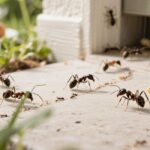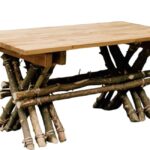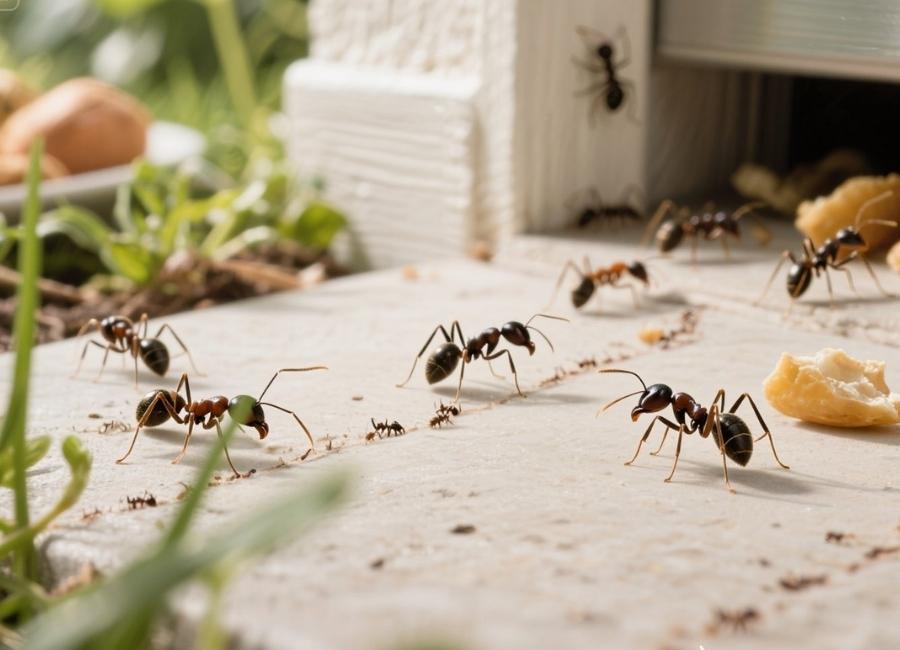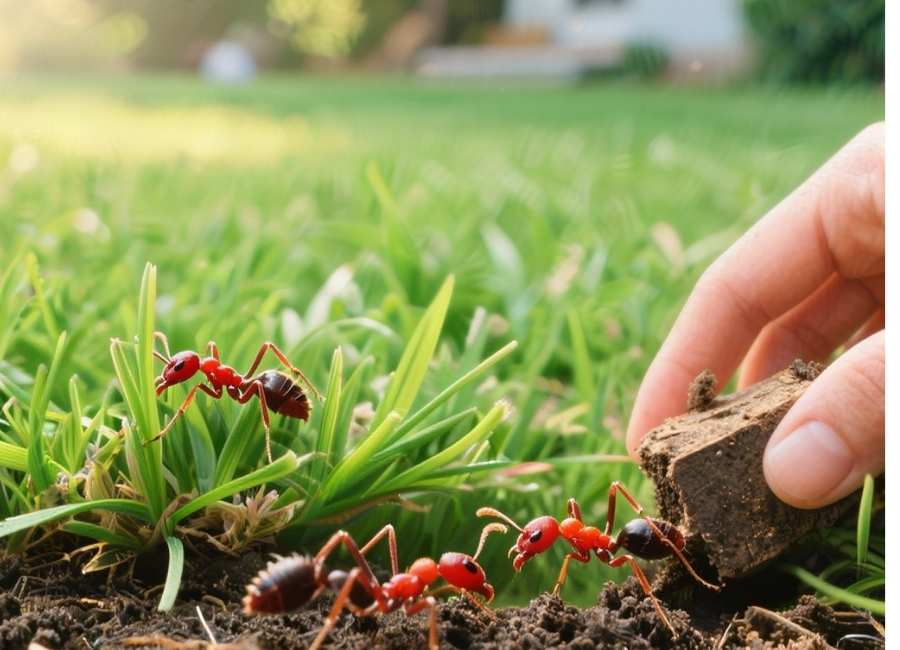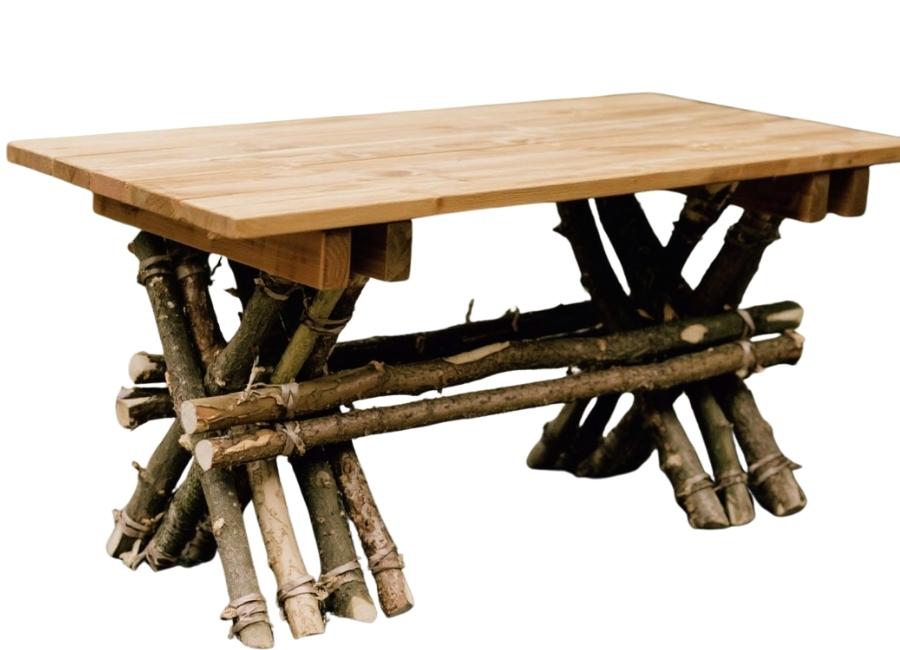It’s normal to see a few ants in the garden, but finding a trail of them in your kitchen is a different story. Ants play a role in nature, but most people don’t want them inside. As the weather warms up, ants start searching for food, and your home might be their next stop.
An ant problem usually begins with a few scout ants. When they find food, they leave a chemical trail for the rest of the colony to follow. (‘Walk this Way’: How ants create trails to multiple food sources, 2024) A small issue can quickly become a big infestation. This guide covers what attracts ants to your home, how they get in, and how you can keep them out for good.
What Attracts Ants Into Your Home?
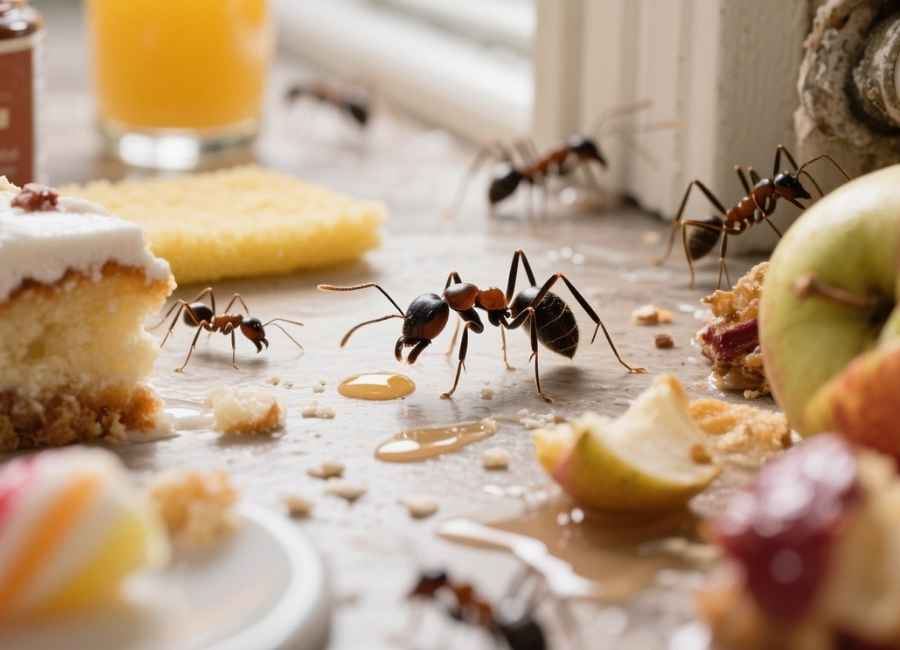
Ants are constantly searching for food, especially sweet things. Even a small spill or crumb in your home can draw them in.
- Sugary Foods and Drinks: Spilled juice, a bit of cake left on the counter, or an unsealed jam jar are all invitations for ants. They don’t need much sugar content to be attracted.
- Crumbs and Food Debris: Leftover food on floors, counters, or in pet bowls can be a meal for ants.
- Greasy Foods: While sweets are a major draw, some ant species, like Pavement Ants and Thief Ants, are also attracted to greasy or protein-rich foods. (Chapter 6 – Pest On or Near Food, n.d.)
- Rotten Produce: Old fruit or vegetables give off smells that can bring ants looking for a quick meal.
- Water Sources: Ants also need water to survive. Leaky pipes, damp sponges, and even condensation on windows can provide the moisture they need, especially in dry climates. (Moisture Ants, n.d.)
When a scout ant finds a food source, it lays down a pheromone trail on its way back to the nest. This trail acts as a map, guiding other ants directly to the food. (‘Walk this Way’: How ants create trails to multiple food sources, 2024) That’s why seeing a single ant is often a sign of many more to come.
How Do Ants Get Inside?
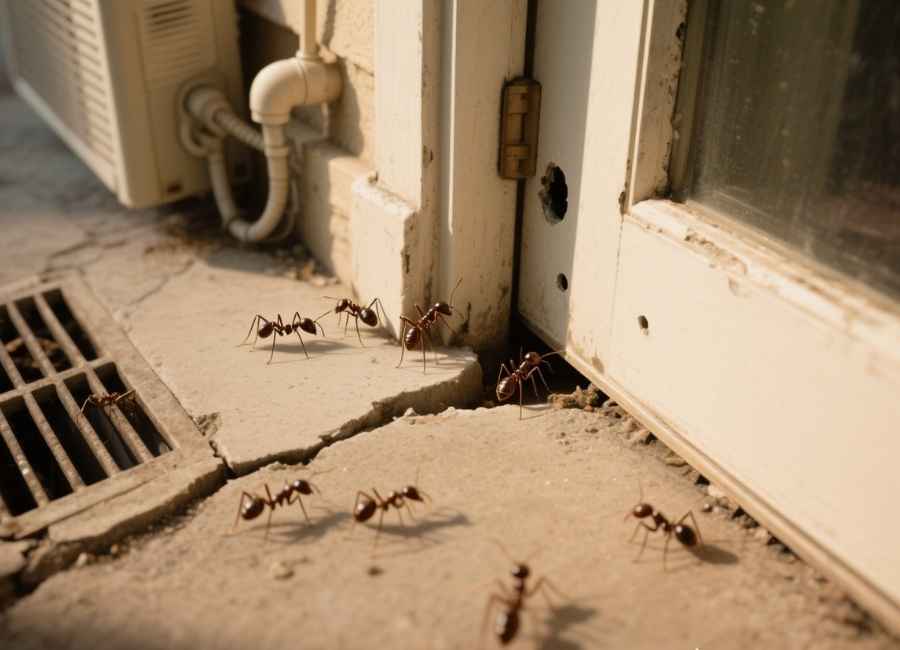
Ants are tiny, so they can slip through the smallest openings to get inside. If they want something in your home, they’ll find a way. Here are some common entry points:
- Cracks in the foundation
- Gaps under doors
- Poorly sealed windows and door frames
- Holes for utility lines and pipes
- Vents and air conditioning units
Sealing these gaps can help, but the most effective way to keep ants out is to remove what attracts them in the first place.
How to Prevent an Ant Invasion
The best way to handle ants is to prevent them from coming in at all. Keeping your home clean is your strongest defense.
Maintain a Clean Kitchen
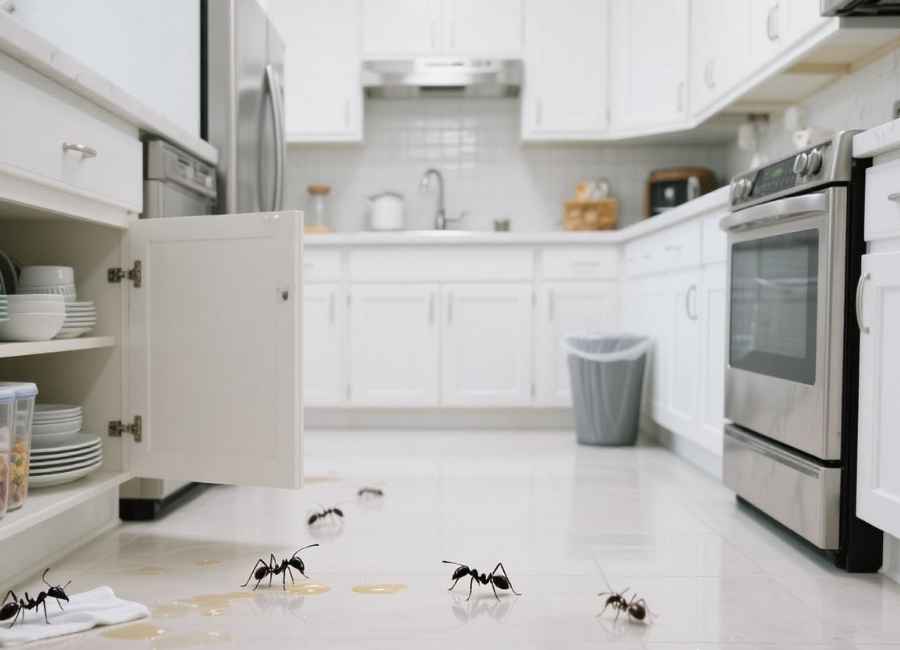
Most ant problems begin in the kitchen.
- Clean up spills immediately: Wipe up any food or drink spills as soon as they happen.
- Wash dishes promptly: Don’t leave dirty dishes in the sink overnight.
- Store food in sealed containers: Keep sugary items like jam, honey, and cakes in airtight containers.
- Sweep and mop regularly: Keep floors free of crumbs and food debris.
- Take out the trash: Empty your bins regularly to prevent odors from attracting pests.
Seal Entry Points
Inspect the exterior of your Home for any cracks or gaps that could serve as an entrance for ants.
- Use caulk to seal cracks in foundations, walls, and around window frames.
- Install door sweeps to close the gap between the bottom of your door and the threshold.
- Ensure window screens are in good repair.
Use Natural Deterrents
There are a few natural ways to keep ants away. These may not solve large infestations, but they can help with smaller issues.
- Vinegar Solution: Mix equal parts white vinegar and water to wipe down surfaces. Ants don’t like the smell, and it also removes their scent trails.
- Peppermint Oil: Ants dislike the smell of peppermint. Put a few drops of peppermint oil on cotton balls and place them near where ants come in.
- Spices: Sprinkling salt, turmeric, or paprika around entry points can sometimes keep ants away.
How to Get Rid of an Existing Ant Problem
If ants are already inside, simply cleaning up the ones you see won’t solve the problem. The nest will keep sending more. To get rid of them for good, you need to target the whole colony.
Follow the Trail to Find the Nest
Start by watching the ants to see where they come from and where they go. This can help you find their entry points and possibly their nest.
Use Ant Baits
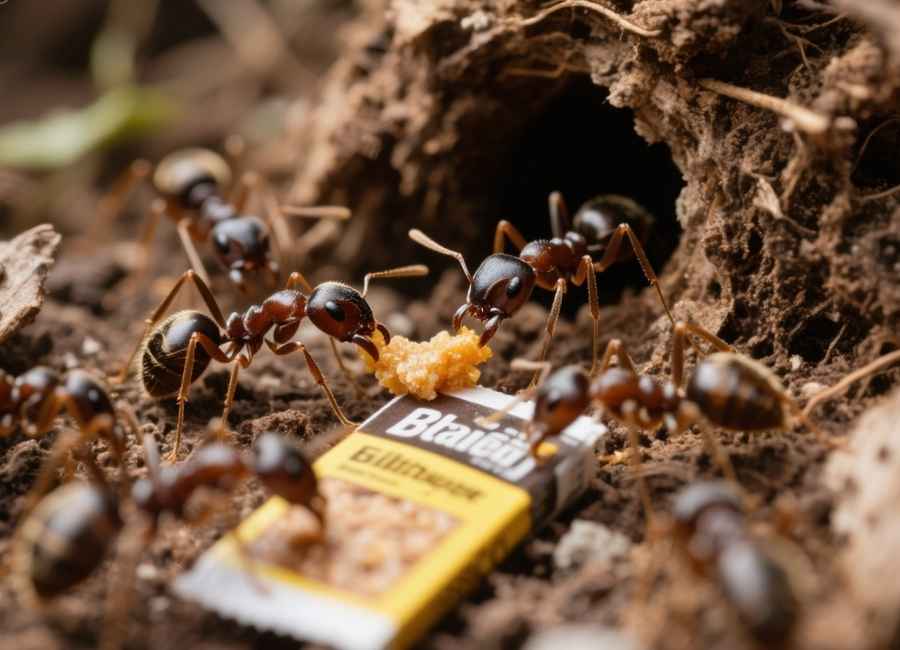
Ant baits are one of the best ways to get rid of a colony. Worker ants take the bait back to the nest and share it with the others, including the queen. This can take about a week, but it works well because it destroys the nest from the inside. (What ant bait kills the queen?, n.d.)
- Put ant bait stations along the trails you’ve found.
- Don’t clean near the bait for a while, or you’ll break the trail.
- Be patient and give the bait time to work. You may see more ants at first as they gather around it.
When to Call a Professional
If you’re dealing with a large-scale infestation, or if DIY methods haven’t worked, it’s time to call a professional pest control service. Experts have access to more effective treatments and can identify the specific type of ant and the best way to eliminate it safely. This is especially important for dealing with species like Carpenter Ants, which can cause structural damage to your Home. (Carpenter Ant Treatments and How They Can Be Destructive to Homes, 2025)
Frequently Asked Questions About Ants
Are ants in the UK harmful?
Most common ants in the UK, like the black garden ant, are not directly harmful. They don’t bite or carry diseases. However, as they travel through various environments, they can pick up dirt and contaminate food and surfaces in your Home. (Pest control: ants, n.d.)
Can ants cause damage to my house?
Certain species, like Carpenter Ants, can cause significant damage. They don’t eat wood, but they excavate it to build their nests, which can weaken wooden structures over time. (Carpenter Ant Damage in the Home – How to Find and Detect it?, 2025) If you see ants with wings inside, it could be a sign of a Carpenter Ant nest within your Home’s structure. (Signs of Carpenter Ants in Your Home, n.d.)
Why are there ants in my bathroom?
Kitchens are the most common place for ants, but bathrooms can attract them too. Ants are drawn to moisture from leaks, wet towels, or condensation. Some soaps and toiletries also have ingredients that attract ants.
What are the small yellow ants in my kitchen?
If you notice tiny, light yellow ants, they are probably Thief Ants. They get their name because they nest near other ant colonies and steal food. They especially like greasy foods and dead insects.
Reclaim Your Home from Ants
Finding an ant trail in your home can be frustrating, but with the proper steps, you can manage and prevent infestations. Keep your home clean, seal entry points, and use ant baits to keep ants away. If the problem persists, don’t hesitate to contact a professional to safeguard your home and peace of mind.

